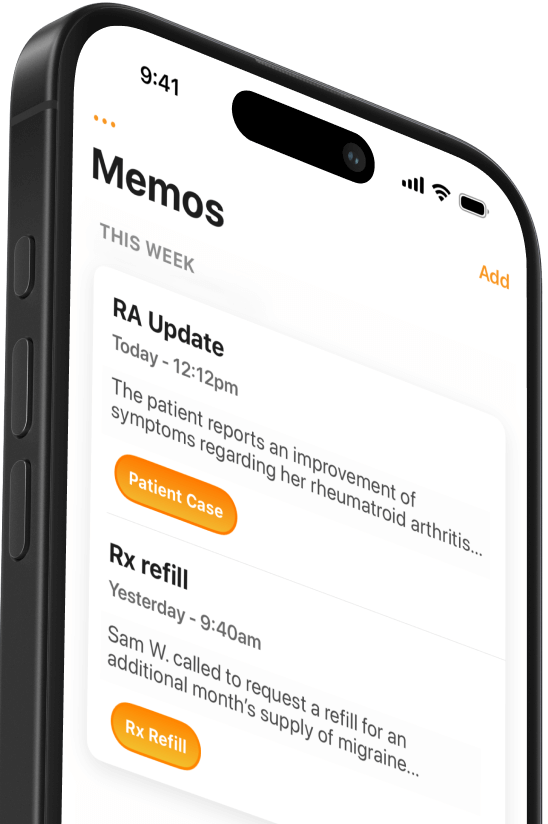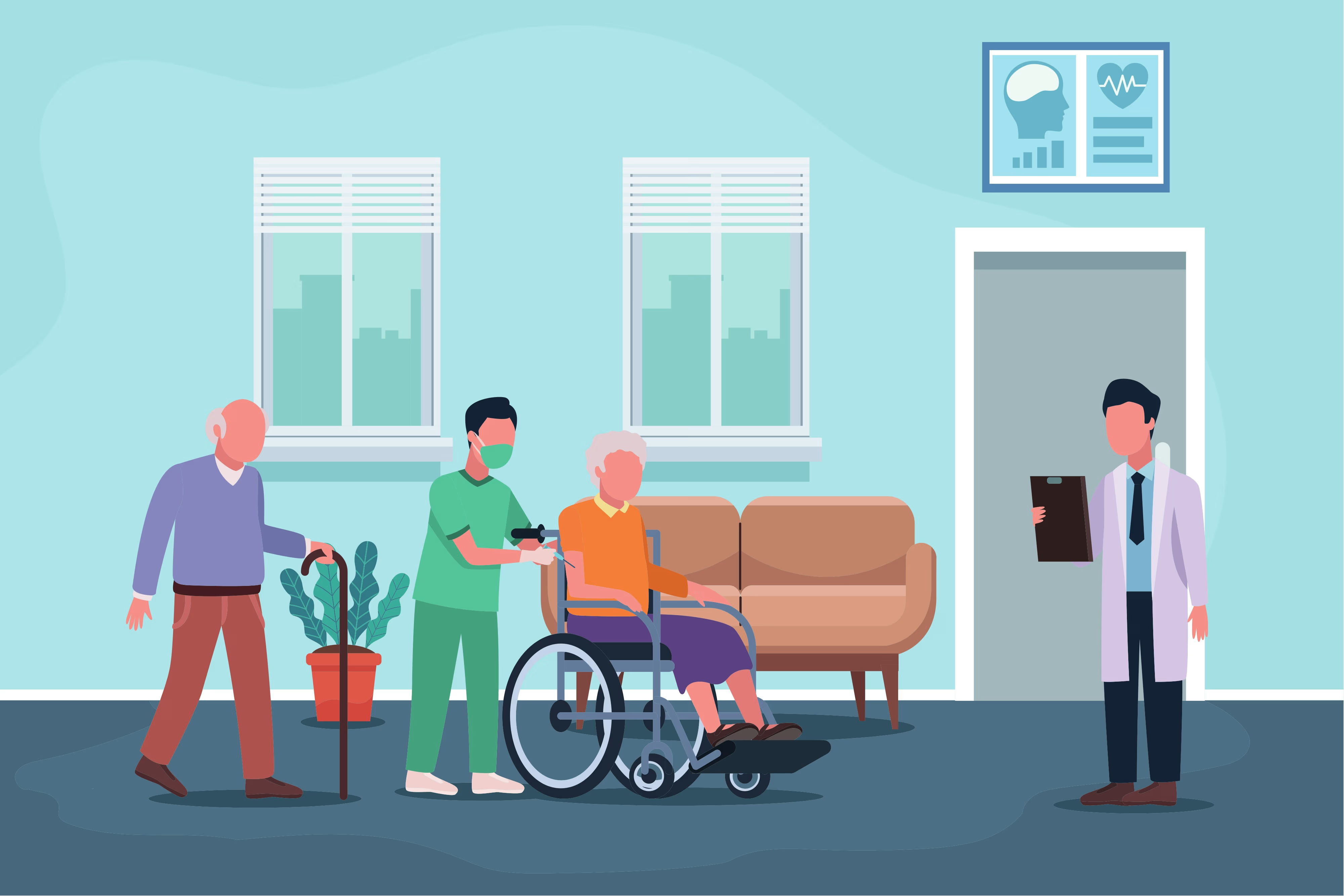A step-by-step guide to taking perfect clinical notes
New to open notes? Learn efficient documentation practices that meet legal, billing, and patient needs—without wasting time.


Popular articles
Clinical record keeping is integral to good professional practice and quality healthcare. However, as healthcare changes with new technology and reimbursement models, so should clinical documentation.
Whether you’re a medical student, resident, or established physician with decades of experience, it can be helpful to go back to the basics. In this step-by-step guide to taking perfect clinical notes, we will cover the following:
- Why write clinical notes
- The importance of context
- What to include in a clinical note
- Tips for better clinical documentation
- Basic legal considerations
- Open clinical notes
- How to keep documentation efficient
This guide is a compilation of best practices. It is not legal or medical advice. When questions arise regarding clinical documentation, providers should always refer to their specialty-specific training and published legal guidelines.
Why write clinical notes
As a busy doctor, high-quality documentation can become a low priority. But remember that medical records are much more than an annoying task on your to-do list.
There are three fundamental reasons to strive for perfect clinical notes.
- Communication – A patient record is a form of communication. Good documentation informs future providers, including yourself, what happened and how you arrived at a treatment plan. Writing good notes is the best way to facilitate high-quality patient care.
- Legal – The medical record is a legal document that may be heavily scrutinized in the case of malpractice. Therefore, it is crucial to document sensitive discussions regarding limits of care, prognosis, and treatment decisions.
- Reimbursement – Clinical notes are a service document. Whether you are self-employed or work for a hospital, medical documentation supports reimbursement. Clear, complete, and accurately coded documentation translates into your businesses’ or your employer’s cost and revenue lines.
Whenever you change your documentation style or workflow, it’s helpful to remember why you write clinical notes in the first place. Consider how the information you decide to include–or not include–affects the medical records’ efficacy as a form of communication, a legal document, and as a service document.
Get the context right
Before getting into the content of a clinical note, remember to check the context. For example, are you writing in the correct patient chart? Have you included the date and time? Will the next person to read the note know who wrote it?
These questions are so basic they are easy to overlook. However, minor context errors lead to enormous time loss and negative impacts on patient health. Before starting your note, make sure to check the following:
- Patient name – Does the name on the chart match the patient you examined? Confirming the patient's identity is especially important in a digital context, where it can be easy to click the wrong button or open the wrong window.
- Date/time – Did you include the correct date and encounter time? Time is critical in emergency or ICU settings, but it can also be easy to miss if you are catching up on clinical notes at the end of the day.
- Heading – Include a descriptive header if multiple providers might edit the note. For example, “Surgery progress note” gives important context if you’re in a hospital or multi-disciplinary outpatient setting.
- Signature – Make sure to sign every entry with your name and title.
How to write a SOAP note
Start your clinical note by briefly summarizing the main presenting issues. For example, “81-year-old male presenting with pneumonia.” Then, use the SOAP method to write your notes clearly and consistently.
SOAP stands for Subjective, Objective, Assessment, and Plan. It’s a helpful acronym for remembering the main elements of any clinical note.
Subjective
This section describes the patient’s story as you understand it. Providers typically use a narrative form to describe the patient’s chief complaints, including onset, chronology, quality, and severity. Document what the patient tells you about how they feel and what happened, in their own words, using direct quotations as appropriate.
Objective
Use the Objective section to document the measurable or objective facts about the patient’s status. These facts could include how you observe the patient (“Patient appears pale and in discomfort…”), vital signs, or other findings from your physical examination (“Widespread expiratory wheeze on auscultation of the chest…”), and any relevant laboratory results.
Assessment
The assessment is your primary medical diagnosis or an interpretation of what “S” and “O” mean. If someone has already made a diagnosis, comment on whether the patient is clinically improving or deteriorating. The assessment should summarize a complete list of diagnoses for hospitalized patients every 1-2 days.
Plan
Document a precise treatment plan, meaning what happened as a result of you seeing the patient. The plan could include further investigations, referral procedures, new medications, or other prescribed therapies.

Tips for better clinical documentation
While the SOAP method is a helpful starting format, structuring your documentation this way doesn’t guarantee a perfect clinical note.
Here are some additional tips for excellent clinical documentation:
- Make entries as soon as possible after providing care. Prompt documentation reduces the risk of forgetting key details. It also ensures other team members know about changes to the patient’s condition or management plan. While this isn’t always possible, do the best you can. If you consistently complete clinical notes long after patient visits, ask colleagues for tips to improve your documentation workflow.
- Be thorough. Remember that the core purpose behind documentation is communication. Future readers will have a different context than you have, so include all the essential details as clearly as possible.
- Be brief. Brevity isn’t just about getting through your documentation efficiently; it also helps your care team. Other providers need your note to quickly communicate important information with as little extraneous detail as possible.
- Be clear. Avoid using abbreviations or ambiguous terms. If you alter or revise a clinical note, remove information using a strikethrough and sign/date your correction.
Basic legal considerations
Strict laws govern the handling and content of clinical records, whether you’re in the United States or another country. In general, these exist to support three aims:
- accuracy and legibility of clinical records content;
- confidentiality and data protection;
- and patient access to medical records.
We’ve summarized the following reminders from published research, but always ensure you know the relevant legal requirements for your context.
Accuracy and legibility of clinical records content
From a legal perspective, there are a few elements to make sure you include in a clinical note. The first is relevant clinical findings, meaning your professional diagnosis and evidence to support your plan.
You also want to include a record of decisions made and actions agreed on, as well as who made the decisions and agreed to the steps. Finally, record the plan and any other information given to the patient. Remember that from a legal perspective, if something isn’t recorded in the clinical notes, it didn’t happen.
Confidentiality and data protection
In the digital era, confidentiality means not sharing patient information without consent and that your entire care team takes the necessary steps to protect patient data.
Rules vary by country, but practitioners in the United States will want to review the HIPAA Privacy Rule. Work with your care team to ensure you’re taking the necessary steps to protect patient data and address potential health IT security risks. The Office of the National Coordinator for Health Information has a helpful seven-step approach for implementing a security management process.
Patient access to medical records
Patients have a right to access their medical records, and laws are changing to protect this right more fully. In the U.S., federal privacy rules gave patients access to clinical notes starting in 2021. That means clinicians and hospitals must provide patients with easy access to their health information, including notes and test results, in a fully automated, low-cost manner.
Open clinical notes
Open notes are now the norm, and this new standard should inform the content and tone of your clinical documentation. In an American Journal of Medicine article titled “Your Patient Is Reading Your Note,” the authors suggest seven tips for implementing open notes in clinical practice:
- Be clear and concise
- Directly and respectfully address concerns
- Use supportive language
- Include patients in the note-writing process
- Encourage patients to read their notes
- Ask for and use feedback
- Be familiar with how to amend notes
Perfect clinical notes are now notes that you're comfortable with anyone reading. You can find a compilation of tips and examples for those suggestions in this toolkit.
How to keep clinical documentation efficient
We would be remiss not to emphasize that perfect clinical notes are notes you complete efficiently.
At a time when most physicians spend over 15 hours each week on clinical documentation and other paperwork, physician burnout is a serious risk.
Here are six workflow hacks for getting clinical notes done on time:
- Leverage the skills of your team members - You don’t have to document everything yourself. Strategically involve other team members and empower everyone to practice at the top of their license. Additionally, ask your colleagues if they use any specific tools to help improve their documentation, such as an EMR-connected app that let's them dictate directly into the patient's chart. (For Athena users, we recommend Mobius Clinic for their clinical documentation.)
- Complete most documentation in the room - Many providers have found that dictating clinical notes during patient visits saves time and provides ancillary benefits. Alternatively, why not incorporate an AI medical scribe to draft clinical notes for you?
- Know the E/M documentation guidelines - Save time by adhering to the guidelines and only documenting what’s medically necessary to complete today’s visit.
- Use essential EHR functions - Templates, for example, are helpful for routine visits where clinical queries are standard. Manual typing – or mobile dictation – may be the fastest option in complex or changing situations. But if it’s flu season, save time by creating a basic influenza vaccine template.
- Let go of perfection - The EHR can be a black hole for perfectionists and compulsive “box-checkers.” Know what matters, and leave the rest alone. Not all boxes need checking, and not all categories need filling on every visit.
- Time yourself - Use a timer and see how long it takes to complete a note. Using this baseline, set a goal to decrease the time it takes you to write each patient note.
When it comes to clinical notes, progress is perfect
Remember that excellent clinical documentation results from initial training and continuing education. As healthcare changes, how you document will change, too. Periodically review your documentation and EHR workflow and make adjustments as necessary.
In summary, perfect clinical notes meet basic clinical and legal requirements and fit within your clinical workflow.
Related Articles


We Get Doctors Home on Time.
Contact us
We proudly offer enterprise-ready solutions for large clinical practices and hospitals.
Whether you’re looking for a universal dictation platform or want to improve the documentation efficiency of your workforce, we’re here to help.





